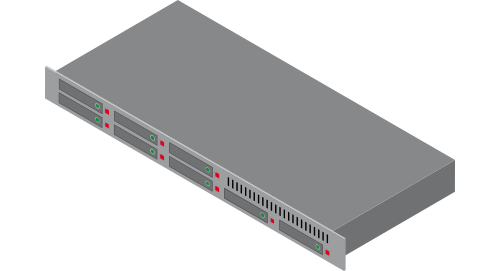Highest reliability through redundancy+—
Maximum system stability and excellent scaling are achieved by operating the central servers in load-sharing mode. Here both geo-redundancy, with least cost routing of the end devices, and hierarchical systems are supported. VoIPv3 end devices can be integrated into any (also redundant) LAN topology via two redundant network connections. The switch built into most of our end devices provides additional cost reduction. Connected in a LAN ring, this helps to save central switch ports and/or cable routes.
IT security built in+—
Passive IT security and better fault and performance management is achieved through state-of-the-art VM-, container and orchestration architecture. The operational units of the servers are separated from each other. A selection of optional HIDS (Host Intrusion Detection System) tools complete the IT security with active mechanisms.
Cost-optimized systems through cooperatively scaled system architecture+—
In order to be able to offer a cost-optimized solution for each MCC project, a suitable server hardware is first selected for a communication cluster. If the Erlang1 that can be processed by the most powerful server hardware is exceeded, the system is broken down into a cooperative structure. Telephone number ranges are distributed through the cooperating servers.
1 Erlang (Erl, erl) is a dimensionless unit that is used in telephony as a measure of offered load or carried load on service-providing elements such as telephone circuits or telephone switching equipment.
